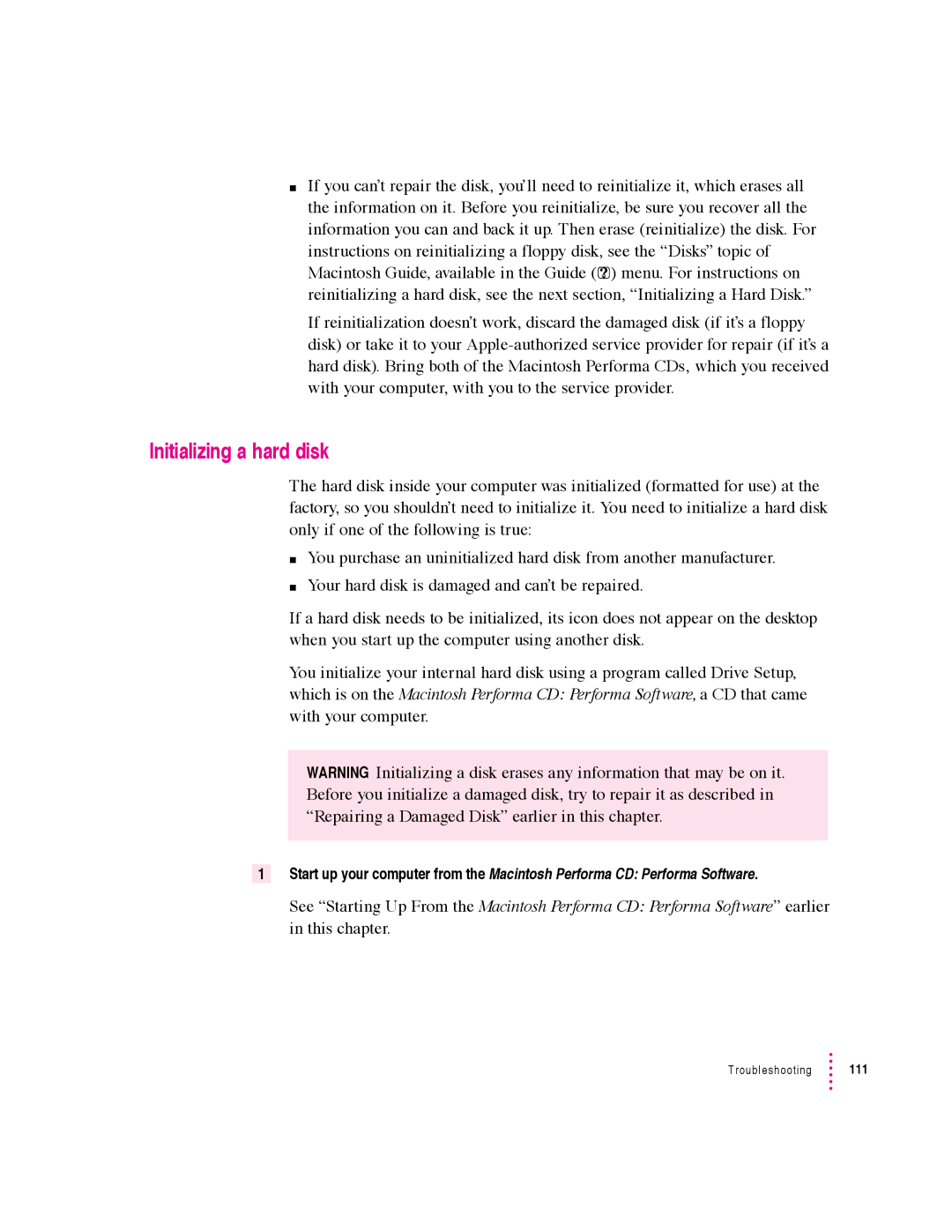
mIf you can’t repair the disk, you’ll need to reinitialize it, which erases all the information on it. Before you reinitialize, be sure you recover all the information you can and back it up. Then erase (reinitialize) the disk. For
instructions on reinitializing a floppy disk, see the “Disks” topic of Macintosh Guide, available in the Guide (h) menu. For instructions on reinitializing a hard disk, see the next section, “Initializing a Hard Disk.”
If reinitialization doesn’t work, discard the damaged disk (if it’s a floppy disk) or take it to your
Initializing a hard disk
The hard disk inside your computer was initialized (formatted for use) at the factory, so you shouldn’t need to initialize it. You need to initialize a hard disk only if one of the following is true:
mYou purchase an uninitialized hard disk from another manufacturer.
mYour hard disk is damaged and can’t be repaired.
If a hard disk needs to be initialized, its icon does not appear on the desktop when you start up the computer using another disk.
You initialize your internal hard disk using a program called Drive Setup, which is on the Macintosh Performa CD: Performa Software, a CD that came with your computer.
WARNING Initializing a disk erases any information that may be on it. Before you initialize a damaged disk, try to repair it as described in “Repairing a Damaged Disk” earlier in this chapter.
1Start up your computer from the Macintosh Performa CD: Performa Software.
See “Starting Up From the Macintosh Performa CD: Performa Software” earlier in this chapter.
